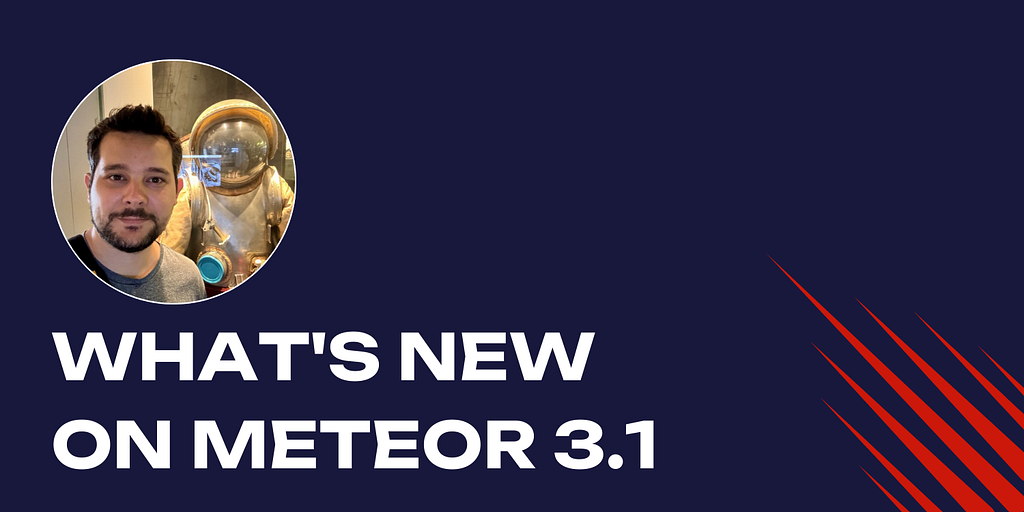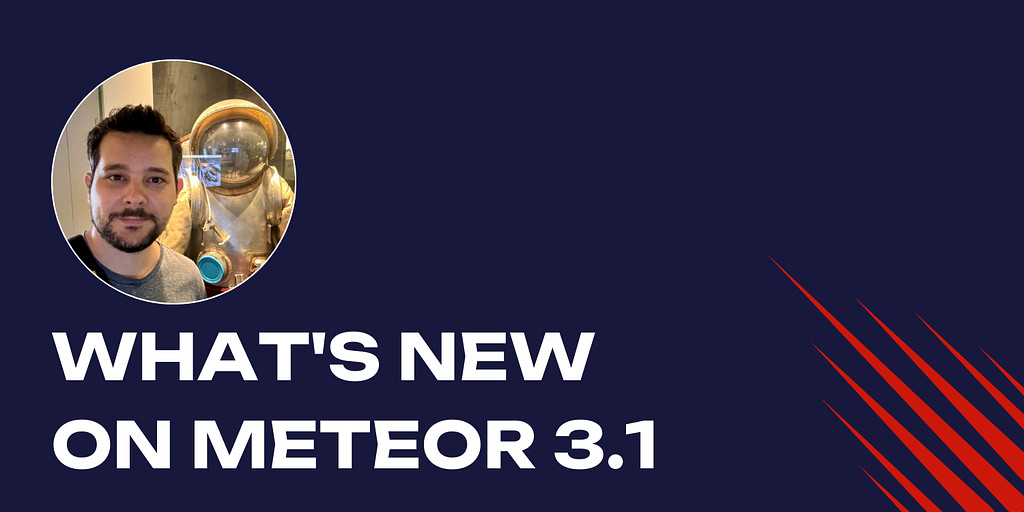
After years of careful architectural evolution, Meteor.js has emerged stronger than ever with its latest 3.1 release. This version represents more than just an update — it’s a complete modernization of the framework that positions Meteor firmly in the contemporary JavaScript ecosystem.
Breaking Free from Legacy Constraints
The journey to Meteor 3.1 began with a significant challenge: the deprecation of fibers in Node.js 16 back in 2021. This dependency had kept Meteor tethered to Node.js 14, preventing the framework from embracing modern Node.js features. Now, with version 3.1, Meteor has not only caught up but leaped forward to support Node.js 22, bringing with it a wealth of cutting-edge capabilities.
What’s New in 3.1?
🚀 Major Infrastructure Updates
- Node.js 22 Integration: Leveraging V8 engine version 12.4, bringing WebAssembly Garbage Collection and the Maglev compiler for optimized CLI performance
- MongoDB Driver 6: Enhanced change streams with document pre- and post-images support, plus modernized APIÂ patterns
- Express 5: Improved security, better promise rejection handling, and Brotli compression support
💎 Core Improvements
- Introduction of the new core “rolesâ€Â package
- Significant real-time code refactoring, laying groundwork for future performance optimizations
- Complete elimination of the underscore dependency from packages
- Resolution of Top Level Await and Reify issues
- Enhanced TypeScript integration in the mongo package
ðŸ› ï¸ Developer Experience Enhancements
- Faster rebuilds and HMR
- Simplified Meteor.EnvironmentVariable implementation
- Native MongoDB support for Apple Silicon (no more Rosetta required)
- Improved Cordova compatibility
- Fixed meteor publish –update command
You can see all pull requests in this release here.
Getting Started with Meteor 3.1
Ready to dive in? Here’s how to get started:
# Install Meteor 3.1
npx meteor
​
# Create a new project
meteor create --release 3.1
​
# Update existing project
meteor update --release 3.1
Technical Deep Dive
Node.js 22 Capabilities
The upgrade to Node.js 22 brings substantial improvements to Meteor’s runtime environment. The new V8 engine (v12.4) introduces WebAssembly Garbage Collection for better memory management and the Maglev compiler for enhanced CLI performance. Developers can now utilize modern JavaScript features like Array.fromAsync() and enhanced Set operations.
MongoDB Driver Modernization
Version 6 of the MongoDB driver introduces sophisticated features for handling data changes and operations. The new API emphasizes Promises over callbacks, bringing cleaner async code patterns. Notable improvements include:
- Enhanced change stream capabilities
- Expanded DDL operation notifications
- Mandatory TLS configurations via SecureContext
- Stricter Node.js version requirements for better stability
Express 5 Security & Performance
The Express 5 integration brings crucial security and performance improvements:
- Stricter input validation for status codes and queries
- Better protection against ReDoSÂ attacks
- Improved promise rejection handling in middleware
- Brotli compression support for enhanced performance
Core Roles Package New
One of the most significant additions in 3.1 is the integration of the roles package into Meteor’s core. This package streamlines user authorization by providing a robust system for role-based access control (RBAC). The core concept is elegantly simple: attach roles to users and verify those roles when controlling access to methods or published data.
The roles package introduces helper methods that make it straightforward to:
- Add and remove role assignments for users
- Verify user roles for access control
- Manage permissions in Meteor methods
- Control access to published data
This integration simplifies the implementation of authorization logic in Meteor applications, making it easier to build secure, role-based systems.
Looking Ahead
While version 3.1 represents a significant milestone, the Meteor team hints at even more exciting developments on the horizon. Performance optimization research is already underway, with promising improvements scheduled for version 3.1.1.
Join Our Community! ðŸ¤
We believe in the power of community-driven development, and your contributions can help make Meteor even better! Here’s how you can get involved:
- Star and Watch: Visit our GitHub repository to stay updated with the latest developments
- Report Issues: Found a bug or have a suggestion? Open an issue on our GitHub repository
- Contribute: Whether it’s fixing bugs, improving documentation, or adding new features, we welcome pull requests
- Discuss: Join our vibrant community discussions on Meteor forums and Discord
Help us shape the future of full-stack JavaScript development — every contribution counts!
Acknowledgements ✨
This release wouldn’t have been possible without the dedicated efforts of community contributors. Special thanks to @denihs, @nachocodoner, @leonardoventurini, @StorytellerCZ, @zodern, @harryadel, @perbergland, @9Morello, @wreiske, @MarcoTribuz, @MeteorCoder @caffeinated10xprogrammer
Meteor.js 3.1: A New Dawn for Full-Stack JavaScript Development was originally published in Meteor Blog on Medium, where people are continuing the conversation by highlighting and responding to this story.
Source: Read MoreÂ
